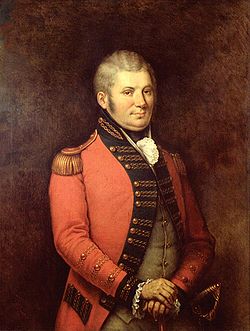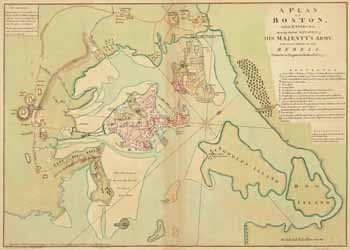Many accounts of
George Washington’s arrival in
Cambridge in 1775 say that he converted the ragtag New England
militia into the
Continental Army.
That’s a misconception. It’s common enough that I might have expressed that understanding myself when I first wrote about the beginning of the war. But it misses an important development that I now see more clearly, and see as more important.
The New England colonies had already formed armies in the spring of 1775. Militia companies were designed to respond to emergencies, such as the
Lexington Alarm. When an emergency was over, men expected to go home. Enlisting in an army meant a man agreed to serve for a defined time.
That was a different
legal relationship between a government and its citizens, and for New Englanders military service was all about that maintaining that covenant. As Fred Anderson has written,
British army officers (who were used to enlisting for life and commanding men who had done the same) and later Gen. Washington ran into trouble because they didn’t share that outlook.
On 19 April and shortly afterward, about 20,000 militia men mobilized, ending up in camps ringing the peninsula of Boston. But with all the regulars back inside the town, the immediate emergency had passed. Some men wanted to go home.
Two days later, Gen.
Artemas Ward wrote to the
Massachusetts Provincial Congress:
My situation is such that, if I have not enlisting orders immediately, I shall be left all alone: it is impossible to keep the men here, excepting something be done. I therefore pray that the plan may be completed and handed to me this morning, that you, gentlemen of the Congress, issue orders for enlisting men.
The committee of safety responded with a proposal to sign up “out of the Massachusetts forces, eight thousand effective men,” to serve for seven months.
Two days later, on 23 April, the full congress went further with two votes:
Resolved, unanimously, that it is necessary for the defence of the colony, that an army of 30,000 men be immediately raised and established.
Resolved, That 13,600 men be raised immediately by this province.
The rest were expected to come from the neighboring colonies.
That Massachusetts army would have fewer men per company and fewer companies per regiment than the Massachusetts militia. The Patriot authorities expected some men to go home and hoped to keep units as cohesive as possible.
In the following weeks, there must have been a lot of discussion within the ranks. Some companies enlisted nearly en masse under their familiar officers. Other men chose to go home to their
wives,
children, and
farms. Some went home and came back. To fill holes, there was some shuffling of officers’ ranks and which companies belonged to which regiments (i.e., reported to which colonels).
Ward and his top officers were worried enough about the war to recommend a formal militia call on 9 May so there would be enough armed men to protect
Roxbury and
Dorchester. Ten days later the general wrote to
Dr. Joseph Warren as president of the congress:
It appears to me absolutely necessary that the regiments be immediately settled, the officers commissioned, the soldiers mustered and paid agreeable to what has been proposed by the Congress—if we would save our Country.
That day the provincial congress approved its first Massachusetts army commission, to Col.
Samuel Gerrish.
Gradually more pieces were put into place. Ward was sworn in as an army general, not just a militia general, the next day. By the end of the month, what Patriot newspapers started calling “the Grand American Army” had about 16,000 men from four colonies.
To be sure, not all those forces were formally enrolled yet. In
Moses Little’s regiment from Essex County,
Moses Sleeper had signed on as a corporal on 9 May. But the committee of safety didn’t approve paperwork for the whole regiment until 26 June, the last regimental commission of the spring. By then some of Col. Little’s companies had already fought in the
Battle of Bunker Hill.
For more about the process of creating this provincial army, see
Mike Cecere’s article “The Army of Observation Forms: Spring 1775 in Massachusetts” at the Journal of the American Revolution.
COMING UP:
Taking the oath.



_crop.jpg/250px-General_John_Stark_-_Ulysses_Tenney%2C_c1790_(Manchester_Hist_Assoc_MHA_316)_crop.jpg)















